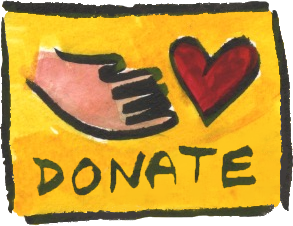Walking with Your Sternum (Patrons)
Back-lying, often knees bent. Learn how preparatory movements for taking a step involve the whole self. Sense and explore movements of the sternum, both as a reference and a challenge to expand the self-image of walking. Arms lengthening and sweeping in many directions encourages suppleness of the chest and awareness of the sternum, and helps integrate the arms with movements of the pelvis, hips, and walking.
We offer over 50 free lessons, but this one's just for our Patron-level donors. You can learn about it in the free lesson notes and comments below, but to access the audio you’ll need to join The FP as a Patron. Learn more
Not sure if you have an account, or what you might have used as your email or password? This form will help!
Step 1. If you don’t remember your password, start by putting in your email address in the form below and we will send you a special link to click on which will allow you to reset your password.
If you aren’t sure what email address you originally used, you can also use the form to test and find out. You'll receive an error message if the email address you entered is not in our system. In that case try another of your email addresses.
Please allow several minutes for the reset email to arrive in your inbox. Also check your spam folder. It can sometimes take up to 30-60 minutes to arrive.
Step 2. When you click the link in your email, you will be asked to create a new password, then use it to login. IMPORTANT: If you are on an iPhone or iPad, it's best to click and hold the link to COPY the URL first, then PASTE the URL into the same browser where you initiated the reset (rather than just clicking it from within your email).
Step 3. Whenever you're logged in, you can use the links at the top of every page on our website to manage your account or edit your profile.
Got a question for Nick, or a thought about this lesson?
Use the comments section below! Public comments build our community and help search engines find us.




What a great homebrew lesson! Particularly useful to challenge the sternum and its partner in crime, the ribcage, to move. Surprising to realise that the sternum could have such a strong role in initiating the final complex movements. I wanted to go for a walk afterwards as I suspect that it would give an opportunity for changes to persist. It was dark so I didn’t today! Thanks very much.
“Partner in crime” – that’s funny! I think you’re alluding to the embedded cultural learning so many of us have picked up, that the ribcage and sternum are some kind of inflexible monolith. It is a crime how common that misconception is! I find it helpful to always be questioning and challenging this one…. I wonder, if we just had never called it a “cage,” if we wouldn’t be as rigid there as we often are!
Hi Nick – Near the end of this one, when you are asking us to feel and create the connection between the standing arm, the pushing of 1 foot and the lightning of the other foot, I experienced that phenomenon of “a predictable neurological response.” Thank you!
That’s awesome! Would you mind elaborating a little bit? Others might enjoy knowing what that “inside baseball” Feldenkrais comment means.
Hi Nick, thanks for a beautiful lesson!
Following the movements of the sternum, I imagined it as a piece of jewlery, like a lovely clasp of a bracelet holding the ribs together (in front) like they were several rows of beads.
A great pleasure this lesson.
Because I have just done a lesson on spinal bias, in this lesson I was able to observe how much what my head is comfortable doing depends on the movement of my spine and how much the differences on each side depend on my spinal bias and how much this relates to my sternum. How did I ever learn to walk?
Wonder of wonders, right?! It really is quite miraculous what we’ve achieved as a species. It also feels like a miracle that just becoming more aware a few of the myriad of details and relationships in walking can offer new options and improvement!
Hi Nick, thank you so much for letting the cage door open! And allowing my limbs to move!????
heard you on “moving into the unknown” podcast and was excited when i heard the title of this lesson. i have been working on this both for walking and riding my mule. in riding feeling not only his foot falls but the movement of his rib cage so i can either follow or guide with mine is very valuable for tempo and harmony. this lesson is a great one for equestrians.
Great to hear! I’ll try to remember this when I hear from equestrians, which is not as rare as I would have thought: seems like a lot of folks like you enjoy Feldenkrais!